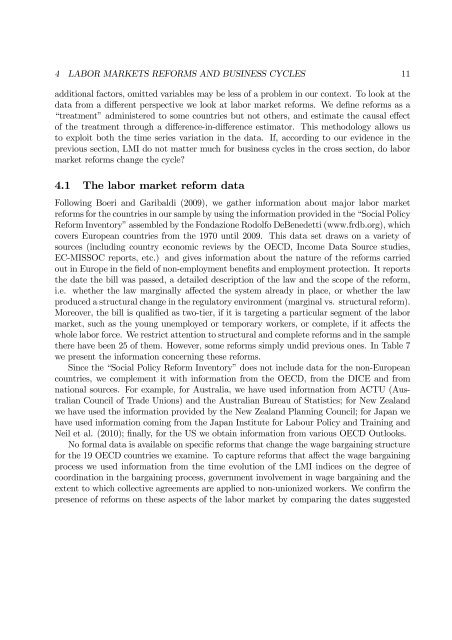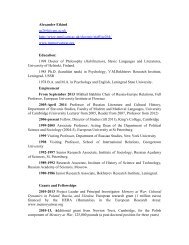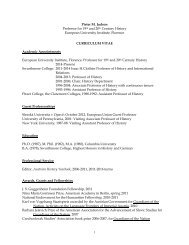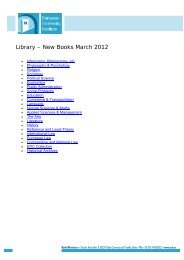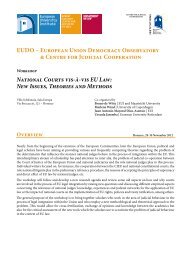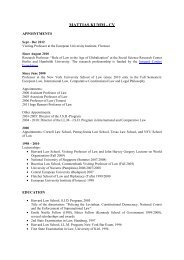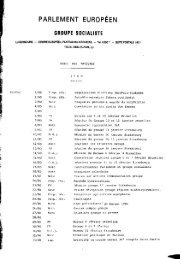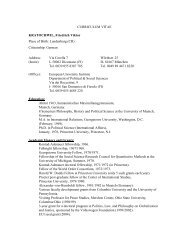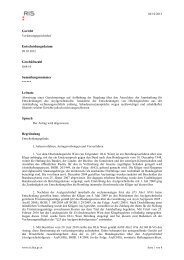Do labor market institutions matter for business cycles?∗ - European ...
Do labor market institutions matter for business cycles?∗ - European ...
Do labor market institutions matter for business cycles?∗ - European ...
Create successful ePaper yourself
Turn your PDF publications into a flip-book with our unique Google optimized e-Paper software.
4 LABOR MARKETS REFORMS AND BUSINESS CYCLES 11<br />
additional factors, omitted variables may be less of a problem in our context. To look at the<br />
data from a different perspective we look at <strong>labor</strong> <strong>market</strong> re<strong>for</strong>ms. We define re<strong>for</strong>ms as a<br />
“treatment” administered to some countries but not others, and estimate the causal effect<br />
of the treatment through a difference-in-difference estimator. This methodology allows us<br />
to exploit both the time series variation in the data. If, according to our evidence in the<br />
previous section, LMI do not <strong>matter</strong> much <strong>for</strong> <strong>business</strong> <strong>cycles</strong> in the cross section, do <strong>labor</strong><br />
<strong>market</strong> re<strong>for</strong>ms change the cycle?<br />
4.1 The <strong>labor</strong> <strong>market</strong> re<strong>for</strong>m data<br />
Following Boeri and Garibaldi (2009), we gather in<strong>for</strong>mation about major <strong>labor</strong> <strong>market</strong><br />
re<strong>for</strong>ms <strong>for</strong> the countries in our sample by using the in<strong>for</strong>mation provided in the “Social Policy<br />
Re<strong>for</strong>m Inventory” assembled by the Fondazione Rodolfo DeBenedetti (www.frdb.org), which<br />
covers <strong>European</strong> countries from the 1970 until 2009. This data set draws on a variety of<br />
sources (including country economic reviews by the OECD, Income Data Source studies,<br />
EC-MISSOC reports, etc.) and gives in<strong>for</strong>mation about the nature of the re<strong>for</strong>ms carried<br />
out in Europe in the field of non-employment benefits and employment protection. It reports<br />
the date the bill was passed, a detailed description of the law and the scope of the re<strong>for</strong>m,<br />
i.e. whether the law marginally affected the system already in place, or whether the law<br />
produced a structural change in the regulatory environment (marginal vs. structural re<strong>for</strong>m).<br />
Moreover, the bill is qualified as two-tier, if it is targeting a particular segment of the <strong>labor</strong><br />
<strong>market</strong>, such as the young unemployed or temporary workers, or complete, if it affects the<br />
whole <strong>labor</strong> <strong>for</strong>ce. We restrict attention to structural and complete re<strong>for</strong>ms and in the sample<br />
there have been 25 of them. However, some re<strong>for</strong>ms simply undid previous ones. In Table 7<br />
we present the in<strong>for</strong>mation concerning these re<strong>for</strong>ms.<br />
Since the “Social Policy Re<strong>for</strong>m Inventory” does not include data <strong>for</strong> the non-<strong>European</strong><br />
countries, we complement it with in<strong>for</strong>mation from the OECD, from the DICE and from<br />
national sources. For example, <strong>for</strong> Australia, we have used in<strong>for</strong>mation from ACTU (Australian<br />
Council of Trade Unions) and the Australian Bureau of Statistics; <strong>for</strong> New Zealand<br />
we have used the in<strong>for</strong>mation provided by the New Zealand Planning Council; <strong>for</strong> Japan we<br />
have used in<strong>for</strong>mation coming from the Japan Institute <strong>for</strong> Labour Policy and Training and<br />
Neil et al. (2010); finally, <strong>for</strong> the US we obtain in<strong>for</strong>mation from various OECD Outlooks.<br />
No <strong>for</strong>mal data is available on specific re<strong>for</strong>ms that change the wage bargaining structure<br />
<strong>for</strong> the 19 OECD countries we examine. To capture re<strong>for</strong>ms that affect the wage bargaining<br />
process we used in<strong>for</strong>mation from the time evolution of the LMI indices on the degree of<br />
coordination in the bargaining process, government involvement in wage bargaining and the<br />
extent to which collective agreements are applied to non-unionized workers. We confirm the<br />
presence of re<strong>for</strong>ms on these aspects of the <strong>labor</strong> <strong>market</strong> by comparing the dates suggested


